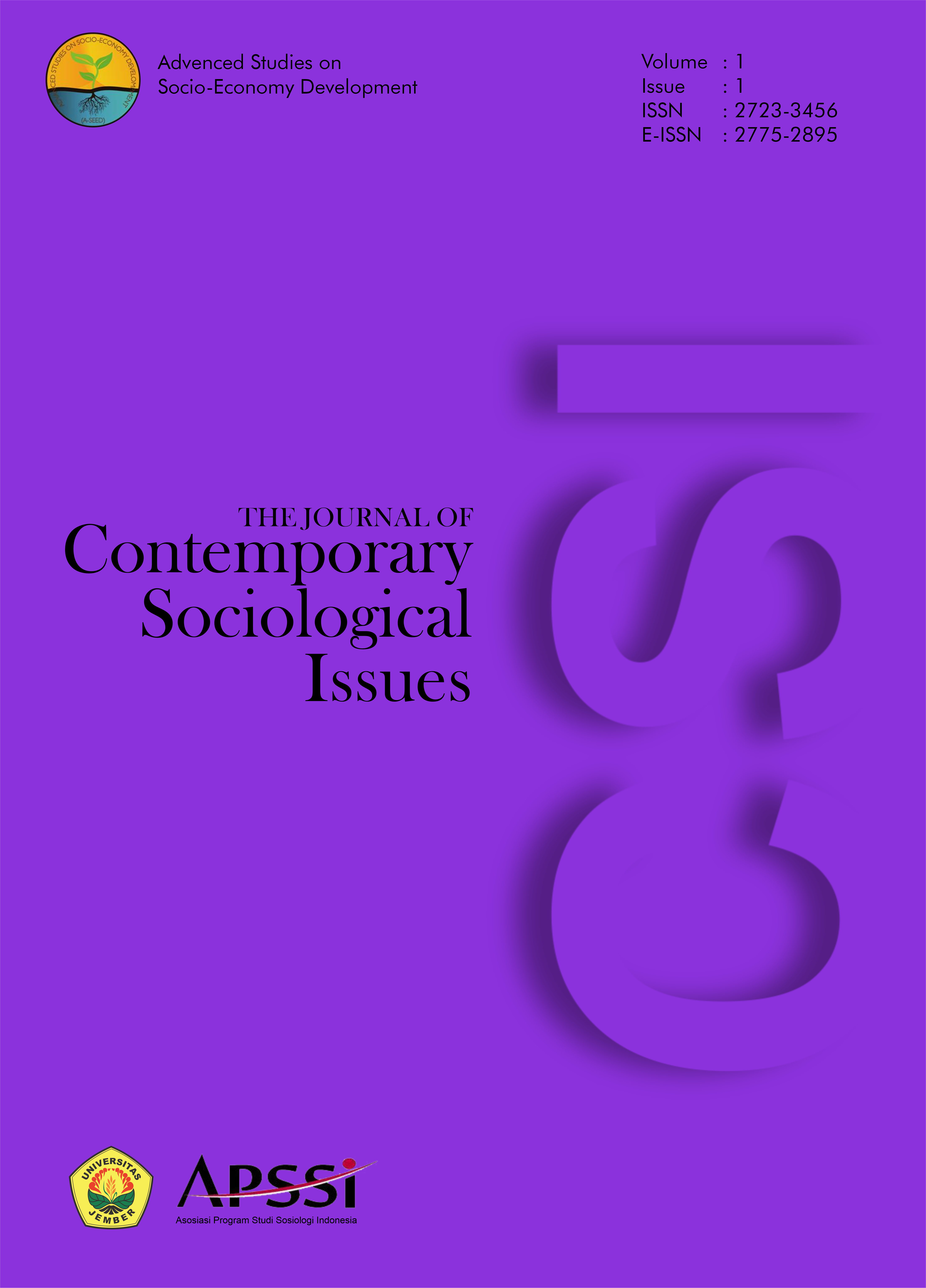On Air: Representing Osing Identity in Community Radio
DOI:
https://doi.org/10.19184/csi.v1i1.17712Keywords:
Osing languages, Osing community radio, Osing representationsAbstract
Keywords: Osing Languages, Osing Community Radio, Osing Representations
Downloads
References
Arps, Bernard. “Osing Kid and The Banners of Blambangan: ethnolinguistic identity and the regional past as
ambient themes in an East Javanese town.†Academia Vol.11, no. Wacana (2009): 1–38.
———. “Terwujudnya bahasa Using di Banyuwangi dan peranan media elektronik di dalamnya ( selayang
pandang, 1970-2009)[ The realization of the Using language in Banyuwangi and the role of electronic media in
it (at a glance, 1970-2009)].†Tokyo Research Instituties for Languages And Cultures Of Asia and Africa (ILCAA)
Tokyo of Foreign Studies, 2010, 226–45.
Barthes, R. Elemen-elemen Semiolog[Semiological Elements ]i. Yogyakarta: Jalasutra, 2012.
Bordieu, P. Dominasi Maskulin[Masculine Dominance]. Yogyakarta: Jalasutra, 2010.
Collin, Matthew. Serbia Calling : Kisah Radio B92, Musik Rock’ n’ roll dan Perlawanan Bawah Tanah dari
Beograd[Serbian Calling: The Story of Radio B92, Rock 'n' Roll Music and Underground Resistance from
Belgrade]. Jakarta: Kantor Berita Radio 68H, 2003.
Featherstone, M. Posmodernisme dan Budaya Konsumsi[Posmodernisme dan Budaya Konsumsi]. Yogyakarta:
Pustaka Belajar, 2008.
Fromm, E. Seni Mencintai. Jakarta: Sinar Harapan, 1990.
———. The Art ofListening (Kritik Atas Psikoanalisis Sigmund Freud). Yogyakarta: Immortal Publishing dan
Octopus, 2002.
Hall, Stuart. Representation. London: SAGE Publications, 2003.
Heryanto, A. Budaya Populer di Indonesia (Mencairnya Identitas pasca Orde Baru)[ Popular Culture in Indonesia
(Thawing of Identities after the New Order)]. Yogyakarta: Jalasutra, 2012.
Jurriens, Edwin. From Monologue To Dialogue : Radio And Reform In Indonesia. Leiden: KITLV Press, 2009.
Kirschke, Linda. Gelombang Kematian: Media Pengobar Genosida Rwanda[Waves of Death: Media of the
Rwandan Genocide]. Jakarta: KataKita, 2004.
Komariah, Kokom. “Pemanfaatan Radio Komunitas Di Masyarakat Nelayan Dalam Melestarikan Lingkungan
Pantai Berbasis Budaya Lokal.[ Utilization of Community Radio in Fishing Communities in Preserving Local
Culture-Based Beach Environment]†Jurnal Visi Komunikasi 13, no. 1 (2014).
Mohamad, Goenawan. Seni Politik Pembebasan[The Political Arts of Liberation]. Yogyakarta: IRCISoD, 2018.
Ong, Walter J. Kelisanan dan Keaksaraan[Ordinance and Literacy]. Yogyakarta: Perpustakaan Nasional: Katalog
Dalam Terbitan, 2013.
Prasetyo, H. “Image Hegemonik: Membentuk dan Menciptakan Ruang Reproduksi Kultural.[ Hegemonic Image:
Shaping and Creating Spaces for Cultural Reproduction]†Dalam Kebudayaan Osing : Konstruksi, Identitas Dan
Pengembangannya. Yogyakarta: Anoegrajek, 2016.
Prasetyo, Hery. “Ruang Abstrak Pemangku Adat : Narasi Elite Dan Re-Tradisionalisme Komunitas Using.[ Abstract
Space for Adat Leaders: Elite Narrative and Re-Traditionalism of the Using Community]†Jurnal Sosiologi
Pendidikan Humanis Volume 2, (2017): 74–87.
Prasetyo, Hery, dan Dien Vidia Rosa. “Space For Cultural Articulation: Voising The Local in Commodity
Transformation.†Dalam Rethingking The Human Dignity and Nation Identity: A Review Perspective of Arts
and Arts Education. Faculty of Language and Arts Yogyakarta State University, 2014.
Sutrisno, M, dan H Putranto. Teori-Teori Kebudayaan[Cultural Theories]. Yogyakarta: Kanisius, 2005.
Tachi, J. A. Radio Sound As Material Culture In The Home. London: University College London, 1997.
Wahyudiono, Andhika. “Kajian Bahasa Osing Dalam Modernitas[The Study of Osing Language in Modernity].â€
Dalam Eskplorasi Bahasa, Sastra dan Budaya Jawa Timuran. Jember: Universitas Jember[In Exploration of East
Javanese Language, Literature and Culture. Jember: University of Jember], 2018.
Weintraub, A. N. Dangdut: Musik, Identias dan Budaya Indonesia[Dangdut: Music, Identity and Indonesian
Culture]. Jakarta: Kepustakaan Populer Gramedia, 2012.



